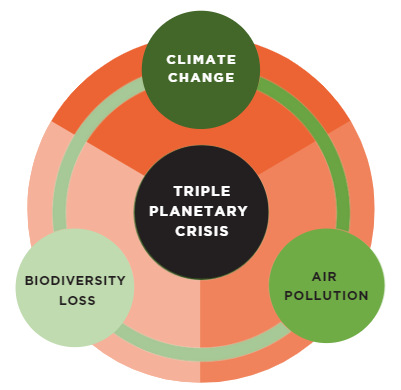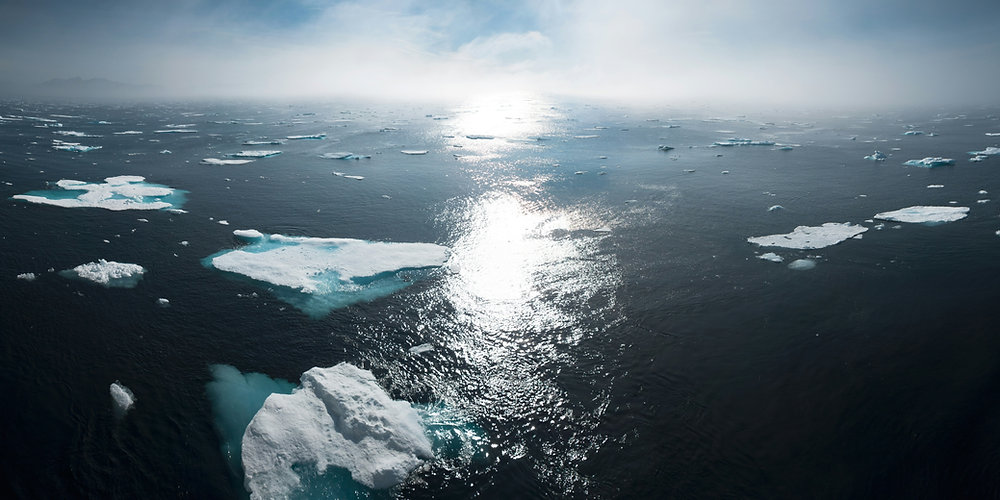The triple planetary crisis describes three major environmental challenges: climate change, biodiversity loss, and pollution. These interconnected crises are threatening ecosystems, economies, and human health worldwide. The United States, as one of the largest economies and emitters, plays a decisive role in shaping how the world responds.
This article explores the nature of the triple planetary crisis and the ways the U.S. is addressing each part of it. It also looks at how American policies influence global action and what lessons can be drawn for the future.
Understanding the Triple Planetary Crisis
Climate Change
Climate change results from greenhouse gas emissions, mainly from burning fossil fuels. It causes rising global temperatures, stronger storms, droughts, and sea level rise. In the U.S., hurricanes along the Gulf Coast, wildfires in California, and heatwaves across the country highlight the growing risks.
Biodiversity Loss
Biodiversity is declining due to deforestation, pollution, overexploitation, and climate change. In the U.S., species like pollinators, amphibians, and marine life face threats from habitat loss and ecosystem disruption. The disappearance of biodiversity reduces food security, weakens natural defenses, and limits the planet’s ability to absorb carbon.
Pollution
Pollution—from plastics, toxic chemicals, and air contaminants—has a direct impact on human health and ecosystems. In the U.S., millions live in areas with unhealthy air, while rivers and oceans continue to suffer from industrial waste and plastics. Pollution disproportionately affects vulnerable communities, raising questions of environmental justice.

U.S. Role in Combating Climate Change
The U.S. is the world’s second-largest emitter, making its policies critical for global climate stability.
Domestic Action
Recent legislation, such as the Inflation Reduction Act, has invested heavily in renewable energy, electric vehicles, and clean technologies. States like California have set aggressive goals for emission reductions and renewable energy expansion.
International Engagement
The U.S. rejoined the Paris Agreement in 2021 and pledged to cut emissions by 50 to 52 percent below 2005 levels by 2030. It has also committed climate finance to help developing countries adapt, although critics argue the contributions are still below the needed level.
U.S. climate leadership is influential, but it faces challenges. Fossil fuel dependence remains high, and political divisions can slow progress.
U.S. Efforts in Biodiversity Protection
Biodiversity protection in the U.S. has a long history, but the scale of today’s crisis demands new urgency.
Protected Areas and Conservation
The U.S. manages an extensive system of national parks, wildlife refuges, and marine sanctuaries. New initiatives aim to conserve 30 percent of U.S. lands and waters by 2030, aligning with international biodiversity goals.
Endangered Species
The Endangered Species Act has saved species such as bald eagles and gray wolves from extinction. Yet many species remain at risk due to habitat loss and climate pressures.
Global Contributions
While the U.S. has not ratified the Convention on Biological Diversity, it supports many conservation efforts worldwide through funding and technical support.
U.S. Approach to Pollution Control
Pollution is a widespread issue that requires strong policies and international cooperation.
Air Quality
The Clean Air Act has reduced pollutants like sulfur dioxide and lead, improving public health. Still, many urban and industrial areas continue to struggle with smog and fine particles.
Plastic and Waste Management
The U.S. produces significant plastic waste. Efforts are underway to reduce single-use plastics, increase recycling, and support international agreements on plastic pollution.
Hazardous Chemicals
Policies regulate toxic chemicals, but new threats such as PFAS chemicals demand stronger enforcement. Addressing these issues is vital for protecting both ecosystems and public health.
The Interconnected Nature of the Crisis
The triple planetary crisis cannot be solved in isolation. For example, climate solutions that ignore biodiversity may create new problems, such as large-scale monoculture tree planting that damages ecosystems. Similarly, reducing air pollution lowers both greenhouse gas emissions and health risks.
U.S. strategies are beginning to reflect these connections. Wetland restoration projects, for instance, reduce flooding, capture carbon, and provide wildlife habitats. Clean energy programs reduce both emissions and local air pollution.
Funding and International Cooperation
Solving the triple planetary crisis requires significant global funding, with trillions needed to transition to clean energy, restore ecosystems, and reduce waste. The U.S. provides climate and environmental funding to developing countries but often faces criticism for not contributing enough compared to its economic power and historical emissions.
Stronger commitments in climate finance, technology transfer, and global partnerships are areas where the U.S. can lead. Its role in international negotiations on climate, biodiversity, and pollution treaties directly shapes global progress.

Lessons for Global Action
The U.S. experience in addressing the triple planetary crisis offers lessons for other nations:
- Solutions must address climate change, biodiversity, and pollution together.
- Investment in resilience, such as clean energy and natural infrastructure, reduces long-term costs.
- Environmental justice must be at the center, ensuring vulnerable communities are protected.
- Innovation and technology play a key role in finding sustainable alternatives.
- International cooperation is essential, as no single country can solve these crises alone.
Conclusion
The triple planetary crisis of climate change, biodiversity loss, and pollution threatens the stability of societies and ecosystems worldwide. As a leading power and one of the largest contributors to these problems, the U.S. has a responsibility to act decisively.
Through stronger climate policies, expanded biodiversity conservation, and tougher pollution controls, the U.S. can set an example for global action. But this requires sustained investment, consistent political will, and a focus on equity.
The choices the United States makes today will influence not only its own future but also the health of the planet for generations to come.
Do Follow USA Glory On Instagram
Read Next – U.S. Emissions and Global Greenhouse Gas Effect Goals






